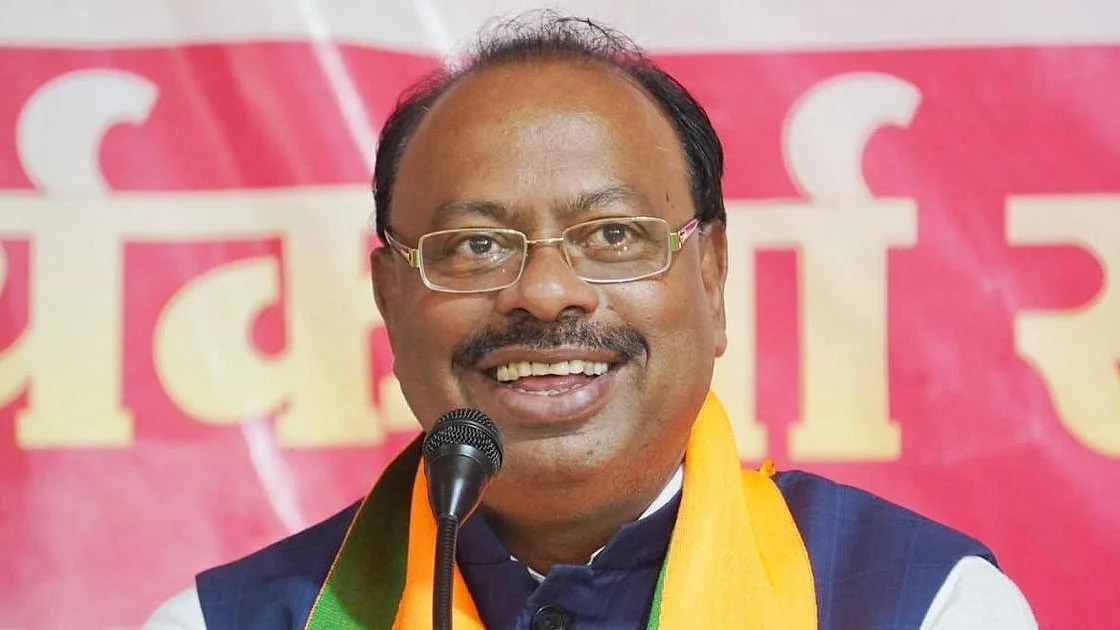Amisha Vora began her career as an employee at Prabhudas Lilladher, one of India’s oldest and most respected broking firms, and later became its owner. In the latest episode of the Simple Hai! show, veteran finance journalist Vivek Law interviewed Amisha Vora, the Chairperson and Managing Director of PL Capital. Vora is a legend in India’s share market, with over three decades of experience. She shared insights on wealth creation, market dynamics, and her philosophy.
Wealth Creation: Investors vs. Traders
When Vivek Law asked Amisha Vora, who had created real wealth in her three-decade-long career, was it investors or traders? Responding to this, Vora said that investors had always created true wealth because success in trading depended heavily on sizing, timing, and repeatedly making the right calls.
Vora mentioned Rakesh Jhunjhunwala, India’s billionaire investor, stock trader, and Chartered Accountant, known as the “Big Bull” of the stock market. She said, “It’s not that Rakesh Bhaiyya Sir didn’t make money through trading, but whether the average investor has made money from trading, I have my serious doubts.”
She then explained that wealth creation was a long process, comparing it to wine: “Older the wine, better it is; longer the period, wealth creation is much higher.”
Outlook on the Indian Stock Market
Looking ahead to the next 5-10 years, Vora told Law that she was optimistic about the Indian stock market due to India’s strong macroeconomic fundamentals, which included inflation, interest rates, and the fiscal deficit.
Vora highlighted:
- Robust Financial Health: India’s government finances, bank balance sheets and overall corporate balance sheets were exceptionally strong.
- Growth Trajectory: She is a strong believer that India’s growth trajectory could accelerate from the then-current 6-7 per cent range to 7.5-8 per cent in the coming decade.
- Continuous Opportunities: Lower interest rates positively impacted Price-to-Earnings (PE) ratios, and stock-specific analysis could yield even higher returns. She said wealth creation opportunities would persist as new sectors emerged.
- Global Alignment and Domestic Action: India was rapidly aligning with global developments, for instance, developing data centres within two years compared to a twenty-year lag historically. The nation was actively engaged in building critical infrastructure, including semiconductors, defence, railways and manufacturing, rather than just planning.
- Impact of AI: While Artificial Intelligence (AI) was anticipated to be a significant disruptor in job creation, it was also expected to create opportunities for wealth creation.
- Importance of Due Diligence: Vora emphasised that wealth is not built on “big-bang announcements” but through a thorough analysis of individual stocks, their business models, competitive advantages (or “moats”), and valuations.
Market Infrastructure and Investor Behaviour Evolution
The Indian market infrastructure has undergone a complete transformation, with regulations, stock exchanges, and depositories now ranking among the best globally. Vora observed a significant shift in investor behaviour, primarily influenced by social media and traditional media, which had vastly increased the spread of knowledge.
Key observations included:
Access to Information: Investors can now easily acquire knowledge through online searches or YouTube.
Resilience of SIPs: The flow of Systematic Investment Plans (SIPs) is not likely to vanish overnight and would continue to grow gradually. Retail investors have shown resilience, even weathering selling pressure from Foreign Institutional Investors (FIIs).
India’s Growth Appeal: Despite perceptions that India is a “costly country,” its higher growth potential will continue to attract foreign investment.
Asset Allocation and the Role of Precious Metals
Vora underscored the critical importance of asset allocation. She told Law that each asset class behaved differently. While Indians had traditionally favoured real estate for its tangible possession and sense of security, it suffered from a lack of price transparency and liquidity when selling, unlike gold, equity and fixed income.
PL Capital employs a quant framework with proprietary metrics to track market and asset cycles for tactical allocation. For example, its multi-asset dynamic portfolio can temporarily hold up to 45 per cent in gold. This framework also guides allocations between large-cap, mid-cap and small-cap stocks.
Regarding precious metals, she highlighted:
- Cultural and Investment Value: The cultural significance of gifting gold and silver in India and strongly advocated for its inclusion in portfolios.
- Recommended Allocation: She suggested a 15-20 per cent allocation to precious metals in a portfolio, clarifying that this recommendation applied to everyone, not just women purchasing jewellery.
- Equity and Fixed Income: Equity allocation, she said, should be tailored to age, ranging from 30-40 per cent for seniors to 60-70 per cent for younger investors. She recommended investing through mutual funds, ETFs and index-based ETFs. Fixed income, on the other hand, served as a “rainy day” fund, providing liquidity when needed.
The Perils of Do-It-Yourself Investing and the Value of Professional Advice
Vora advised caution against a purely Do-It-Yourself (DIY) approach to investing. While short-term trend following could yield success, she said investors often struggled when trends changed due to a lack of thorough fundamental research and understanding. “When the odds are against you, that’s when your real knowledge comes to play,” she said.
Vora stressed that even professional investors faced difficulties, and those who cultivated a strong mindset navigated the market more effectively. Given the complexity, retail investors should recognise the need for thorough preparation or seek guidance. She questioned why individuals often focused on the small cost of advisory fees when the long-term benefits were substantial. Just as effort was put into earning money, she said, a similar level of understanding should be applied to growing it. Trust and transparency were paramount when choosing professional advisors.
From Employee to Entrepreneur in a Male-Dominated Sector
Amisha Vora, a gold medallist Chartered Accountant, began her career in research at Prabhudas Lilladher. Her transition to entrepreneurship was driven by her strong belief in India’s growth potential and a conviction that the respected Prabhudas Lilladher brand had significant untapped growth opportunities, despite other partners considering selling it to a strategic investor.
She asked the partners to let her buy the firm herself instead of selling it to an external investor.. Her diverse 20-year experience, encompassing research, institutional business, corporate advisory, retail distribution, wealth management, risk, operations, compliance and IT, has given her the confidence to take on this challenge. She lived by the mantra: “Don’t die before you die” and “taking a ‘no’ before you have tried is like dying before you die,” a spirit that consistently guided her. In a sector traditionally seen as a “boys’ club,” Vora developed business by directly contacting Foreign Institutional Investors (FIIs) globally. Her approach focused on adding value and providing solutions to clients’ concerns, which fostered strong relationships and facilitated her journey.
Empowering Women in Financial Decision-Making
Vora told Law that she held a distinct perspective on women’s financial empowerment. Historically, men made investment decisions in Indian households, often without involving women. However, as women had become educated and entered the workforce, she urged men, especially senior figures, to involve them in investment discussions.
For Men: Involve women in financial decision-making, give them responsibility, and respect their views, as educated women can understand and often make more responsible and thoughtful decisions.
For Women: Develop financial information skills, invest time and claim their “rightful place” in financial matters. Being financially literate contributed significantly to family safety and preparedness for unforeseen circumstances.
Family Meetings: She strongly recommended holding monthly or quarterly family meetings to discuss portfolios and asset allocation, with women actively participating and monitoring their investments.
Amisha Vora’s journey reflects how conviction, discipline and informed decisions shape both wealth and leadership. Her insights serve as a reminder that financial empowerment and long-term thinking are essential for achieving sustainable success.


.jpg)







